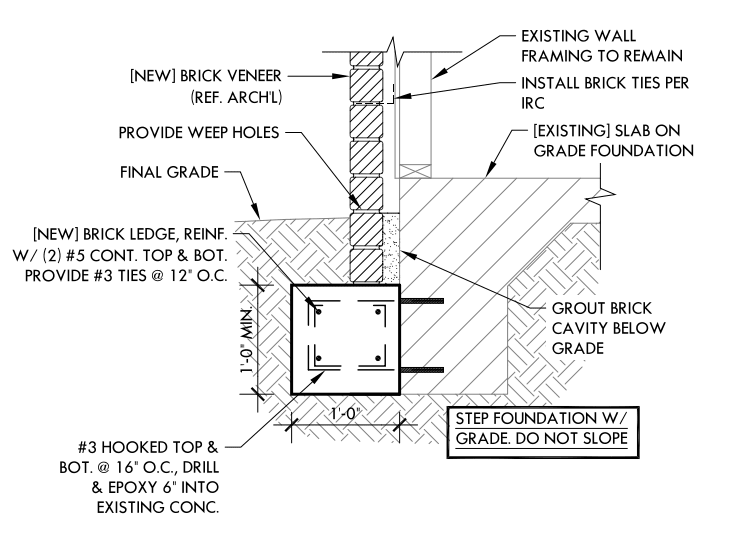bhiggins
Structural
- Oct 15, 2016
- 152
Hi Eng-tippers!
Does anyone have any good details for adding a brick ledge to an existing foundation? I provided a detail to the contractor, but this particular detail will not work because the existing foundation only extends 8" into grade.

I'm trying to come up with an alternate detail that would work. I'm reluctant to specify adding a standard 5 1/2" wide brick ledge because of inadequate bar development like this detail:

I'm worried that the new concrete can de-laminate from the existing due to only having 2-3 inches of bar development. Has anyone had any success with such a detail in the past? Does anyone have a suggestion for a better detail? The foundation bears on good quality limestone.
Does anyone have any good details for adding a brick ledge to an existing foundation? I provided a detail to the contractor, but this particular detail will not work because the existing foundation only extends 8" into grade.

I'm trying to come up with an alternate detail that would work. I'm reluctant to specify adding a standard 5 1/2" wide brick ledge because of inadequate bar development like this detail:

I'm worried that the new concrete can de-laminate from the existing due to only having 2-3 inches of bar development. Has anyone had any success with such a detail in the past? Does anyone have a suggestion for a better detail? The foundation bears on good quality limestone.
